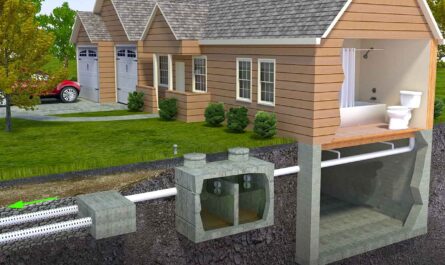What are Geotextiles?
Geotextiles are permeable fabrics which, when used in association with soil, have the ability to separate, filter, reinforce, protect or drain. They come in a wide variety of forms fitting many engineering applications. Geotextiles are made primarily of polypropylene or polyester. They are manufactured in different densities and strengths depending on their end use.
History and Growth of Geotextiles
The development of geotextiles started in the late 1960s with the advent of man-made polymers. Initially, geotextiles were primarily used as separator or filtration layers in drainage applications. However, over the past few decades, their applications have rapidly grown to include reinforcement, erosion control and geotechnical/civil engineering uses. Today, the global geotextiles market stands close to $5 billion annually with Asia-Pacific being the largest market. Various projections expect the market to grow at around 5% annually through 2025 driven by increasing infrastructural development across emerging nations.
Applications of Geotextiles
Separation: Geotextile are commonly used to separate two dissimilar materials like soil and rock or coarse and fine-graded soils to prevent mixing and clogging of drainage spaces.
Drainage: When used as drainage geo-composites or geonets, geotextiles facilitate the removal of water from soil layers to prevent build-up of hydrostatic pressures. They serve as filters and conduits to drain water away while retaining fine soil particles.
Reinforcement: As reinforcing geotextiles, they increase the tensile strength and enhance load-bearing capacity of unbound or finely graded soils. Applications include roadways, embankments, retaining structures.
Erosion Control: Geotextiles act as permeable filters between soil and water when used in applications like turf reinforcement mats, gabion baskets. They anchor vegetation and armor erodible surfaces from water/wind erosion.
Containment: Some geotextiles have very high strength capabilities and are used as liners, covers or wraps in waste containment and landfill applications to envelope contaminants.
Key Properties of Geotextiles
Tensile Strength: Refers to the maximum load or breaking strength of the fabric measured under tensile loading. Determines reinforcement capacity.
Puncture Resistance: Measures the force required to puncture or penetrate the geotextile and is important for separation, filtration or drainage functions.
Apparent Opening Size (AOS): Indicates the maximum pore size in the fabric which corresponds to the soil particle size that will be retained. Important for filtration.
Permittivity: Rate of water flow through the geotextile and is crucial for drainage performance. Higher values are preferable.
Ultraviolet Resistance: Ability to resist degradation when exposed to UV light from sun. Required for long-term external applications.
Types of Geotextiles Based on Functions
Separation/Stabilization Geotextiles: Low to medium strength fabrics used mainly for separating dissimilar materials in roadways, foundations, retaining structures.
Reinforcement Geotextiles: Higher strength geotextiles impart tensile strength to soil layers in embankments, slopes, mechanically stabilized walls and unpaved roads.
Drainage Geotextiles: Medium-high permeability fabrics act as filter/separator and drainage conduits in walls, slopes, along structures to prevent hydrostatic pressure build up.
Erosion Control Geotextiles: Sturdy mats or nets that hold soil/vegetation in place to prevent surface erosion and scouring of drainage channels during rains.
Containment Geotextiles: Thick, puncture resistant and very high strength fabrics for lining hazardous waste sites, ponds and landfills as impermeable barriers.
Specifying Geotextiles for Projects
Proper specification and selection of geotextiles is crucial to ensure they perform adequately for their intended use over the design life of the project. Key factors considered are:
– Soil type and characteristics at the installation site
– Severity of conditions like stresses, punctures etc.
– Design life/durability requirements
– Testing standards followed during manufacture
– Installation procedures and sub-grade preparation
– Performance testing standards for quality control
Specifications generally list out minimum average roll values for properties like tensile strength, puncture resistance, permittivity, AOS etc. that the fabric must meet as per ASTM standards. Additional considerations may include weathering resistance, survivability, jointing details. Third party certification ensures quality supplies.
Quality Control and Sustainability
The quality of geotextile begins right from material selection and in-process quality checks during manufacturing like basis weight measurements, flaw detection testing etc. Quality control at receiving, storing and handling stages is also important.
Field inspection validates that specifications are met and installation is as per design. Performance monitoring over time confirms design life. Proper disposal as per regulations at end of life is essential from sustainability point of view. Many manufacturers have recycling or reuse programs for post-consumer geotextiles.
Geotextiles have revolutionized civil engineering and provided cost-effective solutions to many infrastructure challenges. With growing applicability and properties customization capability, they will continue to play a vital role in the construction industry. However, proper specification, quality assurance and installation practices are equally important to realize their full benefits. Overall, geotextiles have surely established themselves as the ‘workhorse’ material in the field of geosynthetics over the last few decades.
*Note:
1. Source: Coherent Market Insights, Public sources, Desk research
2. We have leveraged AI tools to mine information and compile it



